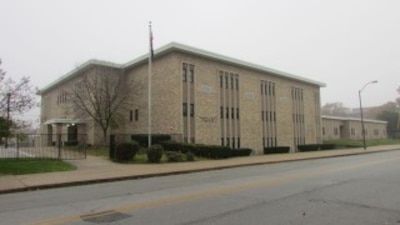Aspiring teacher Bridget Spitale was watching a lesson about adjectives when she realized taking college classes in an elementary school worked.
She was assisting in teacher Mary Ellen Estridge’s classroom while she was talking with her kindergarten and first grade students about adjectives. Estridge moved to telling a story and the way the lesson unfolded was a breakthrough for Spitale’s understanding of effective teaching.
“It was an eye-opening moment,” said Spitale, a Butler junior from Hammond.
The lab school, also known as Indianapolis Public School 60, is a collaboration between the university and the school district and follows a unique curriculum inspired by an Italian educational strategy known as Reggio Emilia. Children are placed among a variety of physical materials that are used to help them experience and understand the concepts they learn.
That morning Estridge told the story of a drive she went on with a friend along a bumpy road in a red car.
“She took a long red wire and constructed a red car from it,” Spitale said. “Then she took another wire and used it to make the long, bumpy road. She continued the story using the wire to describe the adjectives she was using, and it made them come to life.”
Participating in that lesson helped clarify in Spitale’s mind how the Reggio instruction method is a different and, she feels, more vibrant way for young children to learn.
“When I was that age, I was given a worksheet and told to circle all the adjectives,” she said. “It’s the difference between non-engaged learning and the Reggio inspired practice. The students were very into the story. It was very visible.”
What began as a small experiment in 2011 with a handful of Butler-run, Reggio model classrooms for kindergarten and first grade in a corner of School 60 is quickly expanding. IPS accelerated a plan to phase out the traditional neighborhood school that initially shared the building, growing the Lab School to grades K to 3 this year, along with preschool classrooms run by Butler and by St. Mary’s Child Center.
There are now about 200 students that are part of the lab school program at School 60, and the goal is to expand at least to K-5 ,and possibly to K-8, by adding a grade per year. The agreement to run the school gives Butler considerable leeway compared to other IPS schools. The university helped select the principal, Ron Smith, and populated School 60 with eight Butler grads among its nine classroom teachers.
In return for providing a high-quality school option, the university gets a real-life laboratory for its teacher training program. Butler undergraduates can both visit the school as part of their coursework and, in some cases, work as teaching assistants and hold classes at the school.
Cathy Hargrove, a Butler faculty member in the college of education who spends most of her time at the lab school, said it has enhanced the teacher training program.

“They are immediately able to go out and see everything applied and working in the lives of children in the classrooms,” Hargrove said.
Reggio Emilia-inspired schools are still rare in the U.S. The concept comes from an Italian city of the same name that rethought its educational approach while rebuilding its school in the wake of World War II. Because the school was in ruins, much education took place outdoors and ordinary household items were frequently used as teaching tools. In 1991 it was named one of the 10 best schools in the world by Newsweek magazine.
The method is sometimes compared to another Italian instructional approach for young children — Montessori schools. In fact, Reggio borrowed some concepts from Montessori, including an emphasis on hands-on learning and allowing students to make choices about what and how they learn. But Reggio is considered less rigid and more collaborative than Montessori’s very individualized philosophy.
Among the admirers of the approach is Ena Shelley, Butler’s education dean and an early childhood education expert. Shelley has traveled to the town of Reggio Emilia repeatedly and helped spark interest in the instructional style locally at St. Mary’s and some school districts, including Warren and Lawrence townships.
In elementary teacher training, Reggio-inspired approaches are heavily incorporated at Butler. So when Hargrove is explaining a concept to her Butler students during class at the lab school, it isn’t awkward to ask the teacher in the next room if she can borrow a couple students to demonstrate a mini-lesson.
The children are already learning the same concepts in the same style at the lab school that Hargrove is teaching to the college students.
“Collaboration with the classroom teachers is essential,” she said. “It’s not just an isolated lesson. We’re teaching into the curriculum being used at the school.”
Because the lab school is still new, Butler has only begun to use it as a selling point for its teacher training program, but it’s already made an impact for some students.
Anissa Hakim, a senior from Elkhart, looked at a lot of options — including transferring — after deciding a career as a pharmacist wasn’t for her. Teaching was one of her ideas for a new career, and she was won over when she learned about the lab school while checking out Butler’s education school.
“It kept me here,” she said. “I knew we had a lab school and it would be a unique experience. It was a factor in keeping me at Butler.”
